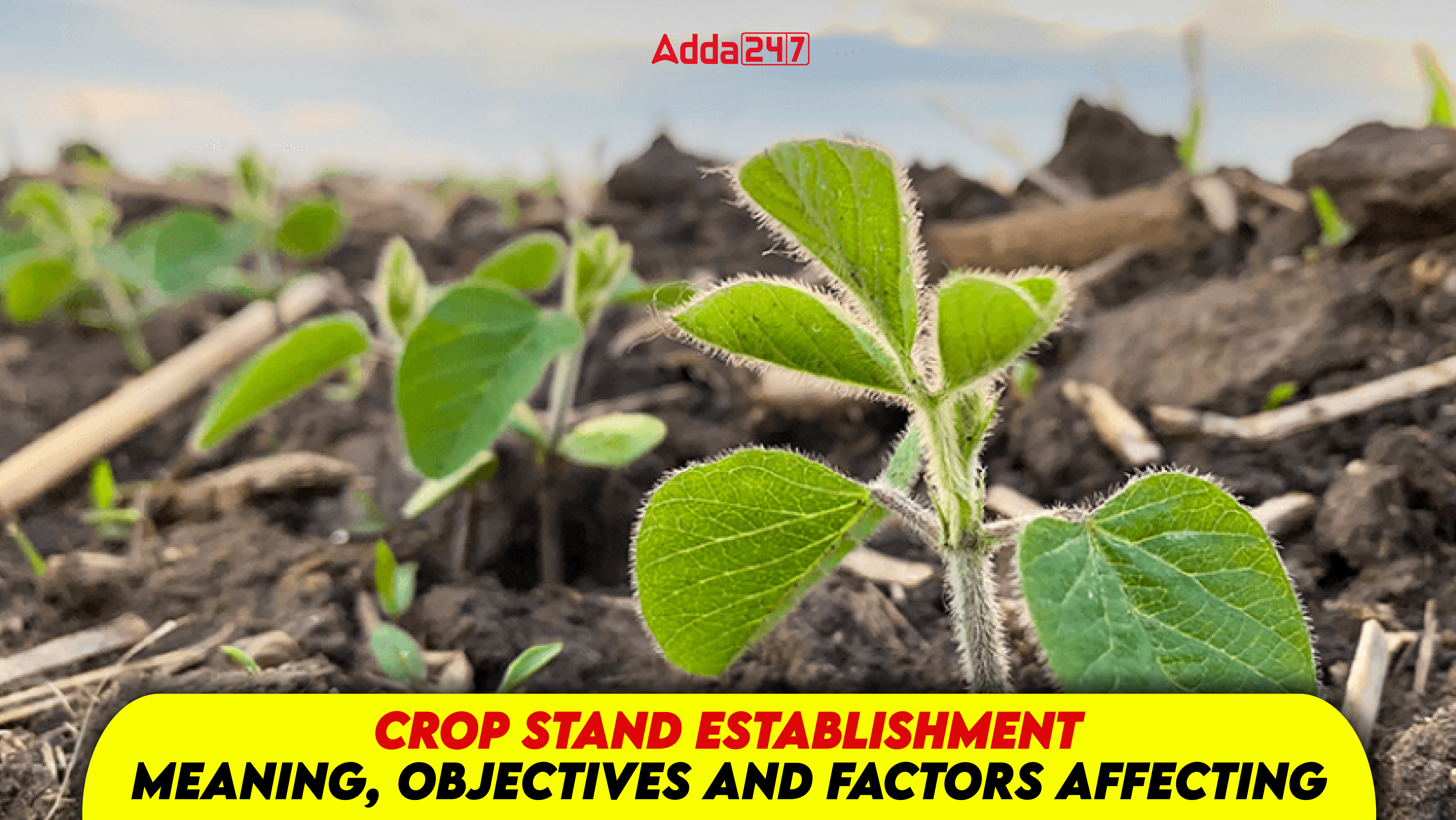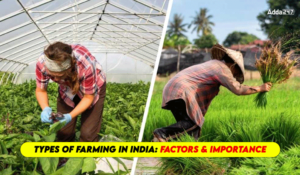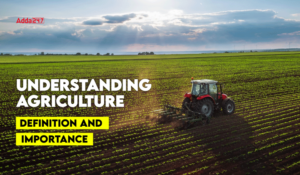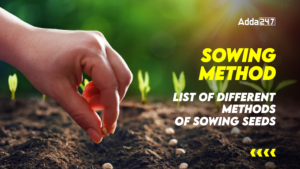Good crop establishment is one of the most important features of better crop production. It’s like giving them a strong beginning for a successful growing season. Planning, choosing the right seeds, preparing the land appropriately, and management techniques are all necessary for a crop to be established successfully and to grow in the best conditions. The better crop establishment is in turn expressed as the optimum plant population in fields. Some plants per unit area in the cropped field are called plant populations.
Principles of Crop Establishment
- Establish a uniform plant stand.
- For maximum yield, plant stand must be uniform across the field.
- Transplanting gives a good stand establishment
- Direct seeding, especially wet direct seeding, may be problematic.
- If direct seed then
i. Need more uniform land leveling and better water management
ii. Seed planted too deep results in poor emergence and weak plants
Optimum plant population
It is the number of plants required to produce maximum output or biomass per unit area. Any increase beyond this stage results in either no increase or reduction in biomass.
Importance of plant population
- The yield of any crop depends on the final plant population.
- The plant population depends on germination percentage and survival rate in the field.
- Under rain-fed conditions, a high plant population will deplete the soil moisture before maturity, whereas a low plant population will leave the soil moisture unutilized.
- When soil moisture and nutrients are not limited high plant population is necessary to utilize the other growth factors like solar radiation efficiently.
- Under low plant population, individual plant yield will be more due to wide spacing.
- Under high plant population, individual plant yield will be low due to narrow spacing leading to competition between plants.
- Yield per plant decreases gradually as plant population per unit area is increased, but yield per unit area increases up to a certain level of population. That level of plant population is called as optimum population. So, to get maximum yield per unit area, optimum plant population is necessary. So the optimum plant population for each crop should be identified.
Factors Affecting Crop Establishment
There are many factors to consider regarding crop establishment. Let’s learn about each factor in detail.
- Setting the Groundwork: Getting the ground ready for planting is the first stage in establishing a crop. To prepare an appropriate seedbed this calls for chores like tilling harrowing and plowing. Soil structure aeration and drainage are all enhanced by proper land preparation.
- Seed Selection: It is important to select the correct kind of seeds. Crop diversity quality resistance to disease and suitability for a given environment are some of the factors that farmers consider when choosing seeds. Better seeds have a higher likelihood of sprouting into strong plants.
- Sowing: Planting seeds in the ground is a process known as sowing. Seed drills are examples of modern machinery that can be used or it can be done manually utilizing age-old techniques like broadcasting or dibbling. Even spacing and depth are ensured by proper seed placement which is necessary for consistent crop emergence.
- Seeding Rate: Accurately calculating the number of seeds to be sown in a given area is known as the seeding rate. This rate influences crop density and resource competition and varies depending on the crop type and local conditions.
- Preparing the Seedbed: It is critical to guarantee adequate seed-to-soil contact following seeding. Early root development and germination are aided by firm seedbeds and sufficient soil moisture.
- Seed Treatment: To protect seeds from pests and diseases and to encourage healthy plant growth apply fungicides insecticides or growth promoters to the seeds. To prevent seed-borne pathogens this is especially crucial.
- Crop Diversity and Crop Rotation: Crop diversity and crop rotation can help lower the risk of soil-borne illnesses and pests in a field by varying the species of plants grown there. By changing the demands for nutrients it also increases soil fertility.
- Weed management: To keep weeds from outcompeting crops for water sunlight and nutrients weeds must be effectively controlled. Herbicide mulching and machine cultivation are some of the techniques.
- Irrigation: Sufficient and prompt irrigation is essential, particularly in areas with erratic rainfall patterns. Early crop growth and germination are supported by adequate moisture levels. The identification and resolution of problems such as uneven germination pest infestations or nutrient deficiencies require routine monitoring of crop establishment. To maximize crop growth adjustments might be required.
- Environmental Factors: Crop establishment is greatly influenced by temperature climate and weather patterns. Unfavorable weather conditions or temperature extremes can have an impact on germination and early growth. After crops emerge they require ongoing attention to optimize yield potential. This includes controlling nutrients preventing pests and diseases and implementing suitable cultural practices.
- Conservation Agriculture: To minimize soil disturbance during crop establishment minimize erosion and preserve the health of the soil some farmers use conservation agriculture techniques. For instance, planting cover crops intercropping, and direct drilling among other methods. For additional details and resources visit the pages on regenerative agriculture and agroecology.



 Types of Farming in India: Factors and I...
Types of Farming in India: Factors and I...
 Understanding Agriculture: Definition an...
Understanding Agriculture: Definition an...
 Sowing Method: List of Different Methods...
Sowing Method: List of Different Methods...




 Adda247 Job portal has complete information about all Sarkari Jobs and Naukri Alerts, its latest recruitment notifications, from all state and national level jobs and their updates.
Adda247 Job portal has complete information about all Sarkari Jobs and Naukri Alerts, its latest recruitment notifications, from all state and national level jobs and their updates.



